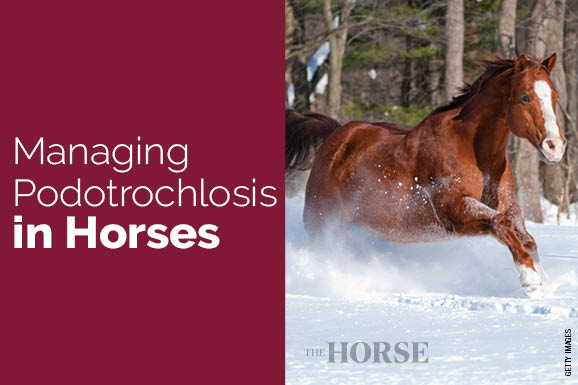
Winter Horse Hoof Care: It’s a Team Effort
Keep your horse sound and moving safely this winter with these smart hoof care practices.
Prevention, diagnosis, and treatment of leg lameness

Keep your horse sound and moving safely this winter with these smart hoof care practices.

Dr. Luke Bass describes the unique joint changes that might be seen in horses with PPID and EMS.

Dr. Howland Mansfield describes signs a horse is ready to retire from riding, ranging from mild work intolerance to lameness.

Obesity could cause increased damage to your horse’s joints. Here’s why.

Dr. Luke Bass explains why injecting your horse’s joints too frequently might be harmful or reduce treatment efficacy.

Leading researchers from around the world share their findings on this common joint disease of young horses.

Learn how to maintain your senior horse’s joints so he stays comfortable into his later years. Sponsored by American Regent Animal Health.

Explore the causes of the chronic hoof condition navicular disease and find out how you can manage it.

Here’s how equine veterinarians can use these nerve blocks to guide their diagnostic imaging plan.

Intra-articular antimicrobial use might not be needed with equine joint injections. Here’s why.

Veterinarians consider MRI the gold standard for diagnosing equine musculoskeletal injuries. Learn more with this visual guide.

Learn how smart trimming and shoeing techniques can help arthritic horses.

Cadaver hoof study confirms expectation that heart-bar shoes can reduce coffin bone motion in horses with laminitis.

Should you consider purchasing a horse with arthritis? An equine researcher explains the risk.

Experts answer common questions about this crippling condition that affects horses of all breeds, disciplines, and ages.

Learn about three regenerative modalities commonly used in equine medicine, when veterinarians and horse owners might consider each, and what’s to come.
Stay on top of the most recent Horse Health news with
"*" indicates required fields